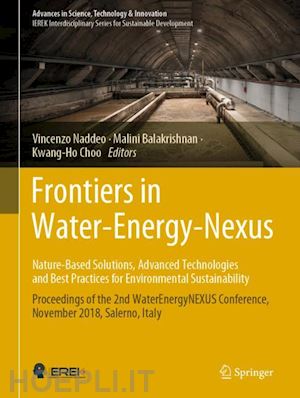Prof. Choo received his Ph.D. degree from Seoul National University, Korea in 1996 and since then has been working on membrane science and technology for water and wastewater, pursuing innovative solutions for sustainable water production and reuse. His recent research interests include membrane electro-oxidizers and quorum quenching membrane bioreactors. He is currently keen to find synergistic options for water-energy nexus issues, using membranes in conjunction with physicochemical/biological strategies, such as iron oxide adsorption, photocatalysis, electrocatalysis, and microbial quorum quenching. He has been actively involved in academic societies, such as International Water Association, Korean Society of Environmental Engineers, and Membrane Society of Korea, and Korean Institute of Chemical Engineers, as an active board/editorial member.
Prof. Vincenzo Naddeo is associate professor at Department of Civil Engineering of theUniversity of Salerno (Italy) where he drives research activities at the Sanitary Environmental Engineering Division (SEED). He was visiting professor at University of Washington (2009) and Yamaguchi Uniersity (2016). He is Associate Editor of the Euro Mediterranean Journal for Environmental Integration (Springer) and co-founding Chair of the conference series WaterEnergyNEXUS. He presently serves on the editorial board of several ISI journals including Scientific Reports (Nature Research), Heliyon (Elsevier), PeerJ (Life, Bio, Environment & Health Sciences) and he is actively involved in a variety of scientific organizations, funding agencies, and European networks. Dr. Naddeo has (co-) authored over 170 refereed publications in ISI journals, congress proceedings and book volumes. He holds 4 patents on water and wastewater treatments by sonolisys and 1 patent on novel electronic nose (e.Nose).
Prof. Balakrishnan's major interests are development and dissemination of environmentally sound technologies, with emphasis on membrane development and applications. She has directed various externally funded projects involving international consortia, as well as projects with industrial applications and is also active in developing and effecting technology transfer of membrane processes and products to industry. Dr Balakrishnan's research has evolved around (a) Microfiltration /ultrafiltration / pervaporation process development (b) new membrane materials (c) value-added utilization of wastes. Primarily, the work is targeted at providing solutions to specific problems with strong local relevance (e.g. advanced wastewater treatment) and is associated with addressing the concerns of major Indian industries (e.g. sugar factories for improved clarification in sugar production process, new applications of waste bagasse fly ash). The research activities are primarily directed at users’ needs with doctoral and masters students concurrently contributing to advancing the state-of-the-art in these fields. She has over 100 publications in ISI journals and conferences to her credit and four patents under processing.











